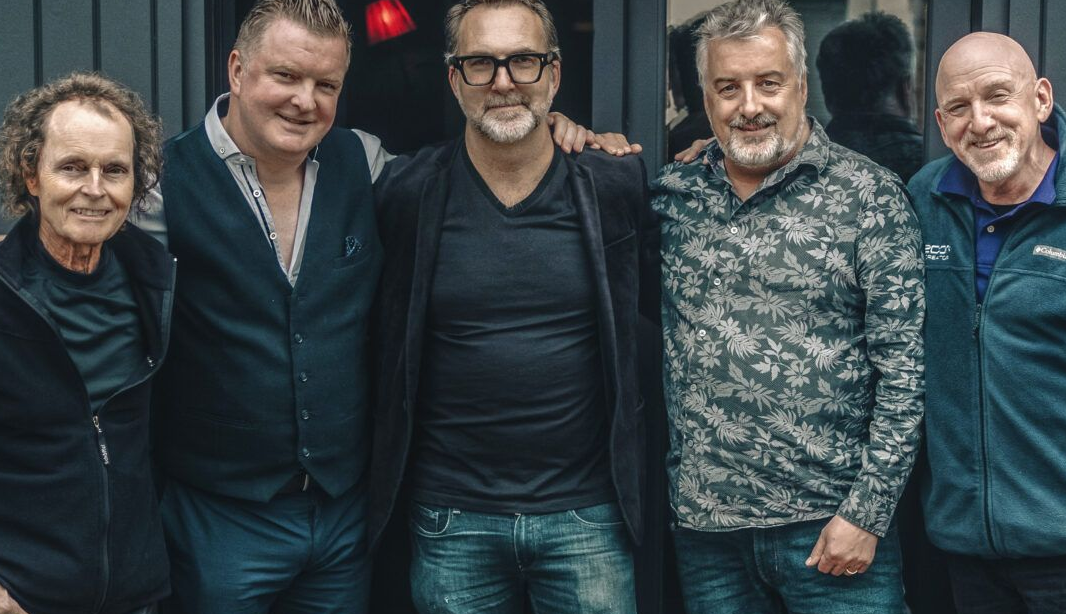
L-r: Mark Egan, Doc O'Connor, Cian Boylan, Linley Hamilton, Adam Nussbaum.
Trumpeter Linley Hamilton's best work to date is Ginger's Hollow. Reasons? Because the tunes are so good; the engineered sound quality high - everything sounds crisp: think someone's diction, it's the equivalent here for instruments - and an ideal modern jazz band size conveys the message. Nothing sounds dated or hidebound by nostalgia even when, and it is, the outcome is quite an easy listening affair.
So here you get reunited again the trumpeter leader Hamilton with hugely fluent tenorist Derek ''Doc'' O'Connor in the front line and then a piano/keys, bass guitar, drums rhythm section, respectively Cian Boylan, Mark Egan who drives Ginger's Hollow up and running on the opener 'Shinebox' and drummer's drummer - for times when you know that Sco has always meant much, much mo - Egan's fellow US master Adam Nussbaum.
This quintet has toured widely in Ireland and is on the road again soon - we saw them down by the banks of the Garavogue in Sligo town just before the first Lockdown and they are very good live. You don't have to sit there all serious watching your p's and q's like you're at your granny's when they're on because it's an organic human listening experience. And we also heard For The Record, which was a solid enjoyable affair.
And yet this inhabits places the earlier record didn't reach melodically. People have got to know one another more. Linley can sound like a lot of players given his all round musicianship (his big heroes are Steely Dan) depending on what he wants. But most pervasively here and elsewhere his heart is where the sound of Freddie Hubbard lives.
A riff-groove alchemy so vital on a jazz record is all present and correct on 'Sunday Morning' where the whole thing teeters on the point of wailing bluesily. And there's good to-ing and fro-ing between Hamilton and O'Connor. Nobody is too shy to express emotion.
Ginger's Hollow is the sort of album where the tunes aren't difficult to get first time around, when the length of the extemporisations is pretty much curtailed but don't forget to say enough meaningfully and so avoid being trite.
There is obviously a strong connoisseur grasp of the jazz language by everyone because they are all virtuosi and paid their dues out on the road and in the studios meaning specifically at the centre of it all the sort of stuff Hubbard did on Red Clay (1970). The Irishness is here in the love of melody not trad Irish folk language of which there isn't any so make no mistake.
Linley likes warm no-nonsense melody so that is a big factor. He is a world away from Herb Alpert which would be too cheesy for some tastes. The Belfast man isn't afraid to write and play tunes rather than dabble in the atonal or the opposite play nursery rhymes. Dublin scene player Boylan is good on the Rhodesey stuff, Egan is of course, if you know his work, a poet of the electric bass and here moves a world away from the kind of history making American pastoral that he was part of in the Pat Metheny Group. The title track - named after a moggie - is the best tune but there is firm competition throughout.
Out on 26 May. Photos: press. ''Making of'' video added on 27 March 2023. 'Shine Box' is streaming (added 9 April 23)
Tags: